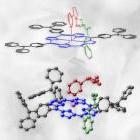












































 Polish-American nicotine trap
Polish-American nicotine trapA polymer with tongs that catch nicotine molecules has been developed by Polish and American scientists. The achievement will be used to build nicotine detectors and nicotine patches releasing the substance over a longer period and more evenly.